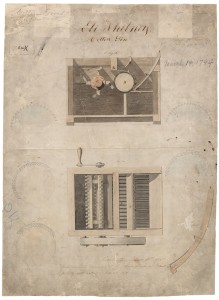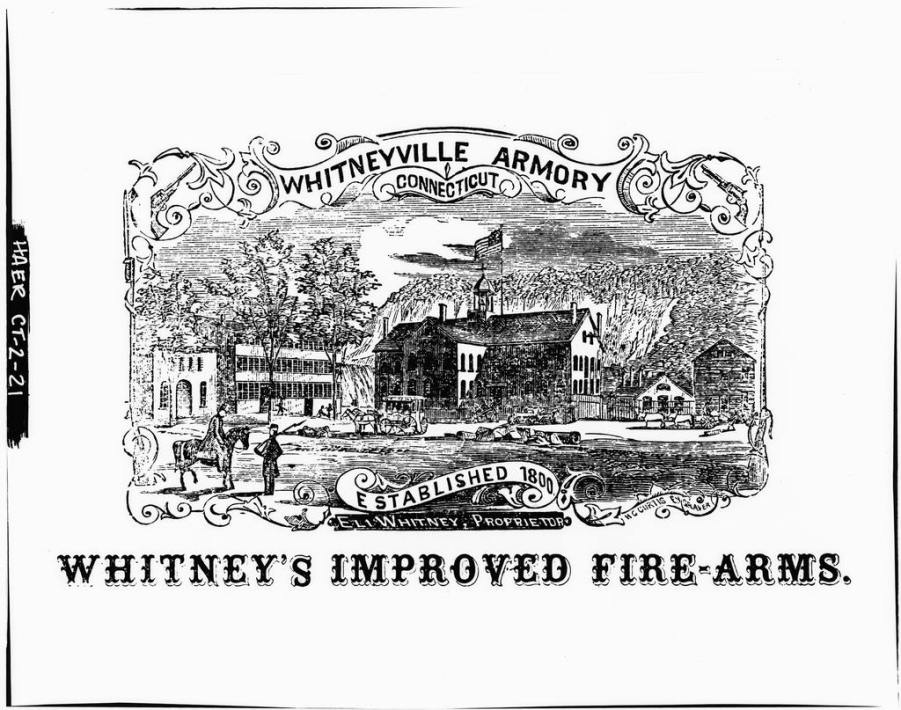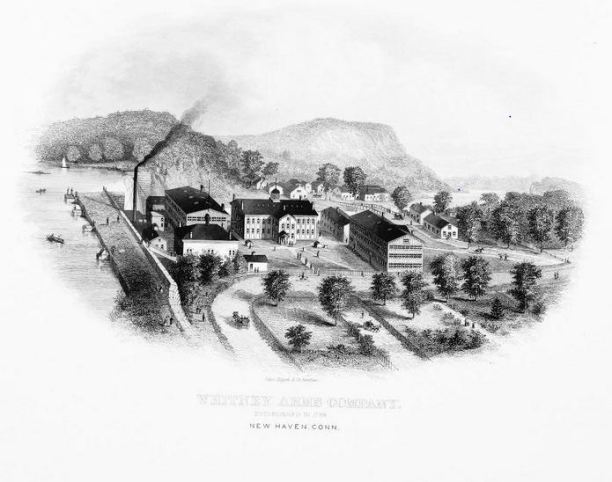Eli Whitney is famous for the cotton gin. His invention revolutionized the cotton industry through its efficient processing of green-seed cotton. It also left behind a legacy of massive slave-based industry in the American South. What is slightly less well-known is that Whitney later established an armory in Hamden that not only produced weapons for the US government during the early 19th century but also contributed to the evolution of mass-produced firearms.
An Inventive Mind
Born in 1765, Whitney spent his youth working on his father’s farm and in his father’s shop where he made nails for sale to the general public. As a young man he intended to study law and traveled to Savannah, Georgia, to tutor children in order to support himself. In addition to tutoring the children of Revolutionary War hero Nathanael Greene, Whitney soon gained a reputation as man with a gift for invention. In 1793, he returned to New England and filed the necessary patents to sell his version of the cotton gin but, unfortunately for Whitney, the money he expended in legal attempts to enforce his patents forced him to abandon the cotton gin business.

Eli Whitney’s Cotton Gin Patent Drawing, 1794 – National Archives and Records Administration
In 1798, knowing little about guns, Whitney bought the land where the New Haven colony‘s first grist mill had been erected 150 years earlier, and he decided to go into the small arms business. At a time when American gun makers produced no more than 300 guns per year, Whitney obtained a contract from the US government to produce 10,000 muskets over two years. Overwhelmed, Whitney did not deliver the first 500 guns until 1801 (three years late) and took until 1809 to completely fill the order.
Interchangeable Parts Contribute to Manufacturing Revolution
While his initial production methods may have been slower than he anticipated, Whitney’s real contribution to the industry came in his devotion to the use of interchangeable parts. At the time Whitney began building muskets, the weapons were made individually by hand. The result of this process made each weapon unique, which meant that when a weapon needed repair, its replacement parts had to be handcrafted to fit that individual gun. Whitney focused on making a series of weapons with interchangeable parts. This was significant for numerous reasons. Not only did it allow soldiers to more readily fix their weapons in the field, but it also lowered costs by making production more efficient. While perhaps not the first person to utilize the concept of interchangeable parts, Whitney certainly contributed to this growing industrial movement that played a significant role in allowing the United States to emerge as a global economic power.
After Whitney’s death in 1825, his firearms business stayed in the family for another 60 years until it was ultimately sold to the Winchester Repeating Arms company in 1888. Although recent tests determined that not all the parts on Whitney’s muskets were interchangeable, and that some parts varied considerably in size, Whitney is still considered a pioneer among a group of men who helped revolutionize production methods in the United States.










